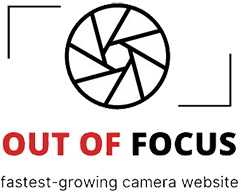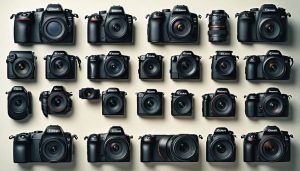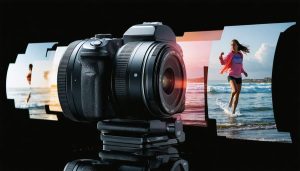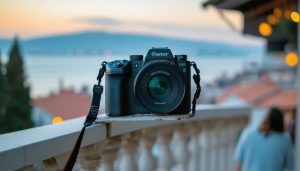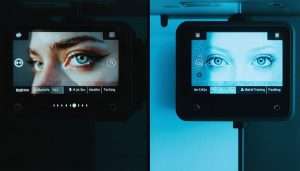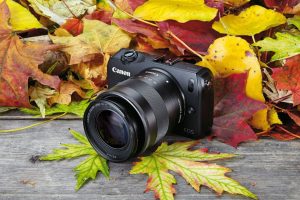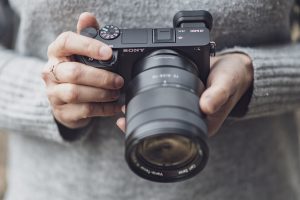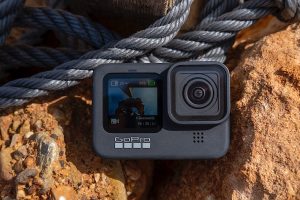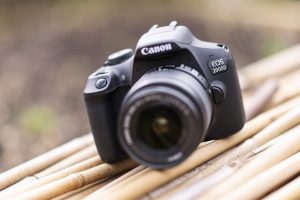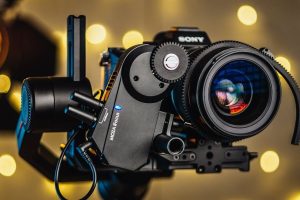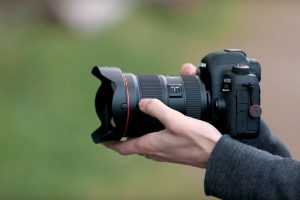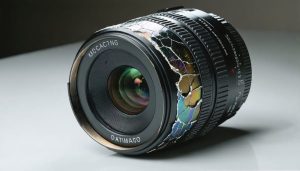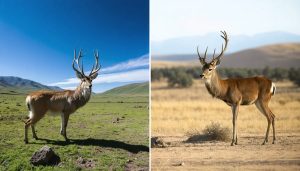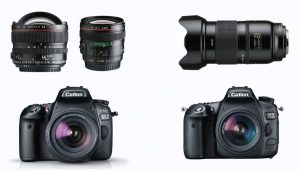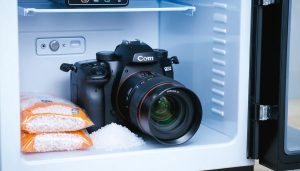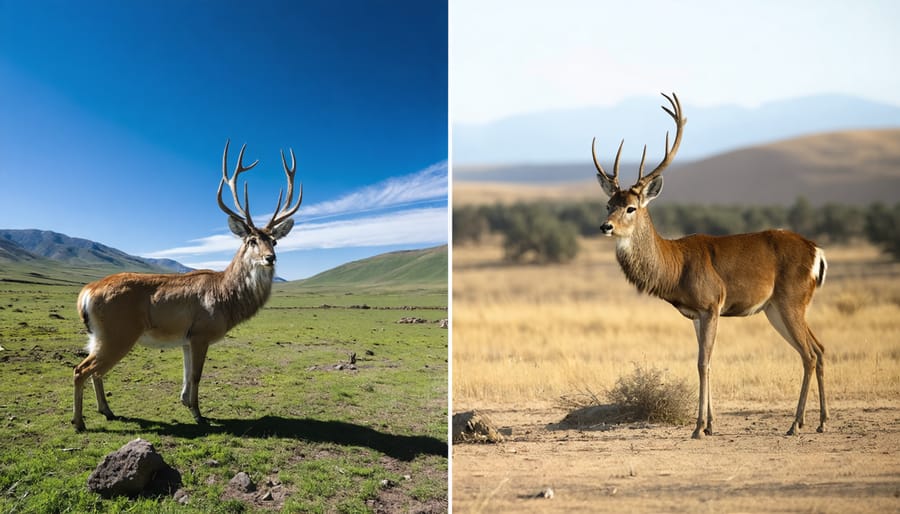
Understanding the difference between camera sensor sizes fundamentally shapes your photographic journey, and the choice between 1-inch and full-frame sensors represents one of modern photography’s most significant decision points. Full-frame sensors deliver unmatched low-light performance and superior depth-of-field control, capturing 4x more light than their 1-inch counterparts. However, 1-inch sensors offer compelling advantages in portability, cost-effectiveness, and extended reach for telephoto work, making them ideal for travel and wildlife photography. This size difference creates distinct creative possibilities, influencing everything from lens selection to shooting style. Whether you’re capturing intimate portraits or sweeping landscapes, understanding these sensor formats’ unique characteristics empowers you to choose the right tool for your photographic vision. The decision ultimately hinges not on which is “better,” but on which sensor size aligns with your specific creative needs, shooting environment, and budget constraints.
Understanding Sensor Sizes and Their Impact
The Real Size Difference
When we talk about sensor size differences, the numbers tell a compelling story. A full-frame sensor measures approximately 36mm × 24mm, matching the dimensions of traditional 35mm film. In contrast, a 1-inch sensor is significantly smaller, measuring roughly 13.2mm × 8.8mm. This size difference results in a crop factor of approximately 2.7x for 1-inch sensors.
To put this in perspective, imagine viewing the same scene through two different windows. The full-frame sensor gives you a wider view, while the 1-inch sensor shows a more zoomed-in perspective of the same scene. This crop factor means that a 50mm lens on a 1-inch sensor camera will provide a field of view equivalent to about 135mm on a full-frame camera.
Understanding these physical dimensions is crucial because they directly impact everything from depth of field to low-light performance. The larger surface area of a full-frame sensor can capture more light and detail, while the smaller 1-inch sensor trades some of this capability for advantages in size and cost.
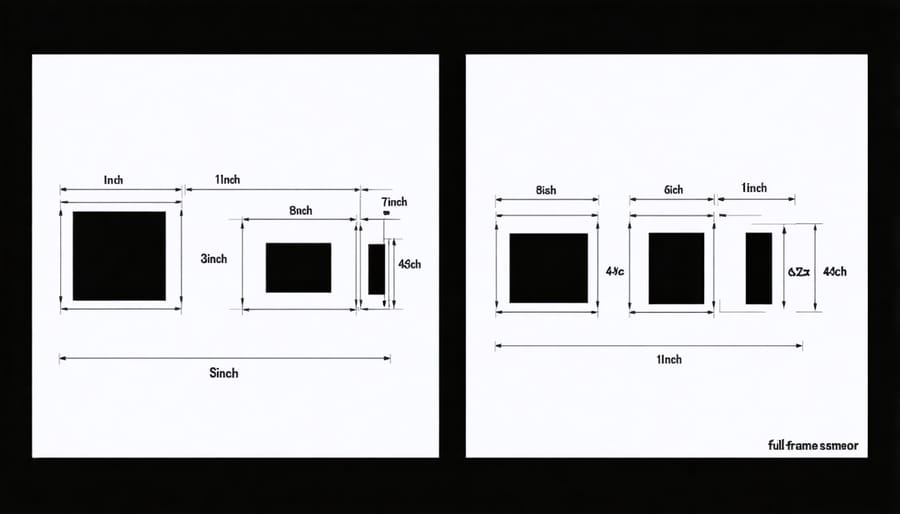
Light Gathering Capabilities
When it comes to photography, the light gathering capabilities of your camera’s sensor play a crucial role in image quality. Full-frame sensors, being roughly 2.7 times larger than 1-inch sensors, naturally collect more light. Think of it like comparing two rain buckets of different sizes – the larger bucket will collect more raindrops in the same amount of time.
This size advantage translates to better performance in challenging lighting conditions. Full-frame sensors typically offer superior high-ISO performance and better dynamic range, allowing you to capture cleaner images in low light and retain more detail in both shadows and highlights. For instance, a full-frame sensor shooting at ISO 6400 might produce images with similar noise levels to a 1-inch sensor at ISO 2400.
However, this doesn’t mean 1-inch sensors are inadequate. Modern sensor technology has made impressive strides, and 1-inch sensors can produce excellent results in good lighting conditions. They’re particularly suitable for daylight photography and situations where deep depth of field is desired. Many professional photographers successfully use 1-inch sensors for events, travel photography, and even some commercial work.
The key is understanding these differences and choosing the right tool for your specific needs. If you frequently shoot in challenging light conditions or need maximum image quality, full-frame might be worth the investment. For general photography in good light, a 1-inch sensor could be more than sufficient.
Lens Performance Characteristics
Depth of Field Control
One of the most noticeable differences between 1-inch and full-frame sensors lies in their depth of field control and bokeh characteristics. Full-frame sensors naturally provide shallower depth of field at equivalent apertures and framing, making it easier to achieve that coveted background blur that many photographers desire.
For example, when shooting portraits at f/2.8, a full-frame camera will produce noticeably more background separation than a 1-inch sensor camera at the same aperture. This is due to the larger sensor size requiring a longer focal length to achieve the same field of view, which in turn affects the depth of field characteristics.
However, this doesn’t mean 1-inch sensors can’t create pleasing bokeh. By using wide aperture lenses and maximizing the distance between your subject and background, you can still achieve attractive background blur. The effect will simply be more subtle compared to full-frame results.
For photographers who prefer deeper depth of field, such as landscape or architectural photographers, the inherently greater depth of field of 1-inch sensors might actually be advantageous. It’s easier to get more of the scene in focus without needing to stop down to extremely small apertures, which can help avoid diffraction and maintain better overall image sharpness.
Consider your shooting style and creative preferences when weighing these differences. Portrait and wedding photographers might gravitate toward full-frame, while travel and street photographers might appreciate the versatility of 1-inch sensors.
Focal Length Effects
One of the most noticeable differences between 1-inch and full-frame sensors is their impact on effective focal length and field of view. Due to the smaller size of the 1-inch sensor, it creates what’s known as a “crop factor” of approximately 2.7x. This means that a 50mm lens mounted on a 1-inch sensor camera will provide a field of view equivalent to roughly 135mm on a full-frame camera.
This crop factor can be both an advantage and a limitation, depending on your photography needs. For wildlife and sports photographers, the increased reach can be beneficial – a 200mm lens effectively becomes a 540mm lens on a 1-inch sensor, providing greater magnification without the bulk and cost of longer telephoto lenses. However, landscape and architectural photographers might find it challenging to achieve wide-angle shots, as a 24mm lens would behave more like a 65mm lens.
The difference in field of view also affects depth of field characteristics. While the actual depth of field doesn’t change, the need to move further back with a 1-inch sensor to achieve the same framing as a full-frame camera can result in a deeper apparent depth of field. This makes it slightly more challenging to achieve the dramatic background blur that full-frame cameras are known for, especially in portrait photography.
Understanding these focal length effects is crucial when choosing between these sensor formats, as it directly impacts your creative possibilities and shooting style.

Edge Performance
When it comes to edge performance, the differences between 1-inch and full-frame sensors become particularly noticeable. Full-frame sensors generally deliver superior corner sharpness, especially when using high-quality lenses designed specifically for the larger sensor format. This advantage stems from the lens’s image circle having more room to breathe, resulting in less optical stress at the edges.
One-inch sensors, while capable of excellent center sharpness, often exhibit more noticeable corner softness and vignetting. This effect is particularly visible when shooting at wider apertures, where light fall-off towards the edges becomes more pronounced. However, modern lens designs and in-camera corrections have significantly minimized these issues for 1-inch sensor cameras.
The vignetting difference is worth considering for specific photography genres. Portrait photographers using full-frame sensors might actually appreciate the natural vignetting for its aesthetic value, while landscape photographers typically want edge-to-edge clarity, making full-frame the preferred choice. For 1-inch sensor users, stopping down the aperture by 1-2 stops usually helps achieve better corner performance and reduced vignetting.
It’s important to note that these differences become less significant in everyday shooting scenarios, especially when images are viewed at normal sizes or shared on social media. The real impact becomes apparent in large prints or when heavy cropping is needed.
Real-World Applications
Portrait Photography
Portrait photography is where the differences between 1-inch and full-frame sensors become particularly noticeable, especially when it comes to background blur and subject separation. Full-frame sensors excel at creating that coveted creamy bokeh effect, thanks to their larger sensor size and typically faster available maximum apertures.
When shooting portraits with a full-frame camera, you’ll notice a more pronounced three-dimensional effect, with subjects appearing to pop from their backgrounds more naturally. The larger sensor also captures more detail in skin tones and textures, providing a more nuanced rendering of your subject’s features.
However, don’t write off 1-inch sensors for portrait work just yet. While they may not achieve the same extreme background blur, they can still produce pleasing portraits, especially in well-lit conditions. The deeper depth of field can actually be advantageous when photographing groups or environmental portraits where you want to maintain context in the background.
One practical consideration is working distance. With a full-frame sensor, you’ll need to step back further to achieve the same framing as a 1-inch sensor due to the crop factor. This can be beneficial in tight spaces where you might not have room to back up with a full-frame camera.
The choice ultimately depends on your portrait style. If you’re aiming for dramatic environmental portraits with razor-thin depth of field, full-frame is the clear winner. But if you’re looking for versatility and don’t mind a slightly deeper depth of field, a 1-inch sensor can still deliver professional-quality portraits, especially when paired with good lighting and composition techniques.
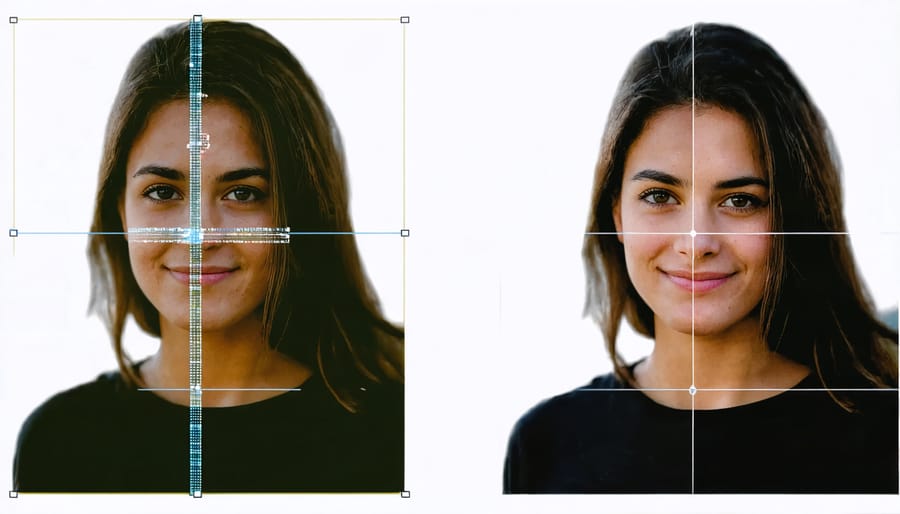
Landscape Photography
Landscape photography presents unique considerations when choosing between 1-inch and full-frame sensors. While both can produce stunning landscape images, they offer different advantages depending on your shooting style and requirements.
Full-frame sensors excel in landscape photography due to their superior dynamic range, which allows you to capture more detail in both shadows and highlights – crucial when photographing scenes with challenging lighting conditions like sunsets or misty mountains. The larger sensor also produces cleaner images at higher ISOs, beneficial for low-light landscapes or when shooting in challenging weather conditions.
However, don’t dismiss 1-inch sensors for landscape work. Their smaller size offers some practical advantages, particularly for hiking photographers or travel enthusiasts. The typically lighter weight of 1-inch sensor cameras makes them more portable for long treks or extended shooting sessions. Additionally, these sensors often provide greater depth of field at equivalent apertures, which can be advantageous when you want to ensure both foreground and background elements are sharp.
Another consideration is lens selection. Full-frame systems typically offer a wider range of ultra-wide-angle lenses, which are popular for dramatic landscape compositions. That said, many 1-inch sensor cameras come with high-quality zoom lenses that cover practical focal lengths for landscape work, often with weather sealing and good optical performance.
The choice ultimately depends on your priorities. If maximum image quality and dynamic range are paramount, full-frame is the way to go. But if you value portability and versatility, a 1-inch sensor camera can still deliver impressive landscape results, especially when paired with good technique and thoughtful composition.
Low-Light Performance
When it comes to low-light performance, the difference between 1-inch and full-frame sensors becomes particularly noticeable. In real-world shooting scenarios, full-frame sensors typically offer a 2-3 stop advantage over their 1-inch counterparts. This means you can shoot at ISO 6400 on a full-frame camera with similar noise levels to what you’d see at ISO 1600 on a 1-inch sensor.
Let’s put this into perspective: imagine photographing a dimly lit wedding reception. With a full-frame camera, you could maintain a faster shutter speed while keeping ISO levels reasonable, resulting in cleaner images with better detail retention. The 1-inch sensor, while still capable, would require either a slower shutter speed (risking motion blur) or higher ISO (introducing more noise) to achieve proper exposure.
However, modern image processing has narrowed this gap somewhat. Today’s 1-inch sensors handle high ISO situations better than full-frame sensors did just a few years ago. Plus, advances in noise reduction software mean that even shots taken at higher ISOs can be cleaned up effectively in post-processing.
For casual photography or well-lit environments, the difference may not be deal-breaking. But for professionals who regularly shoot in challenging light conditions, the full-frame advantage remains significant.
Cost vs. Performance Analysis
Investment Considerations
When considering the investment in either a 1-inch or full-frame system, it’s crucial to look beyond just the camera body prices. Full-frame cameras typically command higher prices, often starting around $1,500 for entry-level models and climbing well above $3,000 for professional bodies. In contrast, 1-inch sensor cameras usually range from $600 to $1,500, making them more accessible to many photographers.
However, the real cost difference becomes apparent when building a complete lens system. Full-frame lenses are generally 2-3 times more expensive than their 1-inch counterparts. For example, a professional-grade 24-70mm f/2.8 lens for full-frame can cost upwards of $2,000, while a comparable zoom lens for a 1-inch system might be around $800.
Storage costs also factor in, as full-frame RAW files are significantly larger than those from 1-inch sensors. This means investing in larger memory cards and more substantial backup solutions. Additionally, full-frame systems often require sturdier tripods and larger camera bags, adding to the overall investment.
For photographers on a budget who still want quality results, a 1-inch system can offer an excellent value proposition. The money saved could be invested in lighting equipment, workshops, or travel opportunities for shooting. However, if budget allows and image quality is paramount, the investment in a full-frame system could pay dividends in terms of creative flexibility and potential professional opportunities.
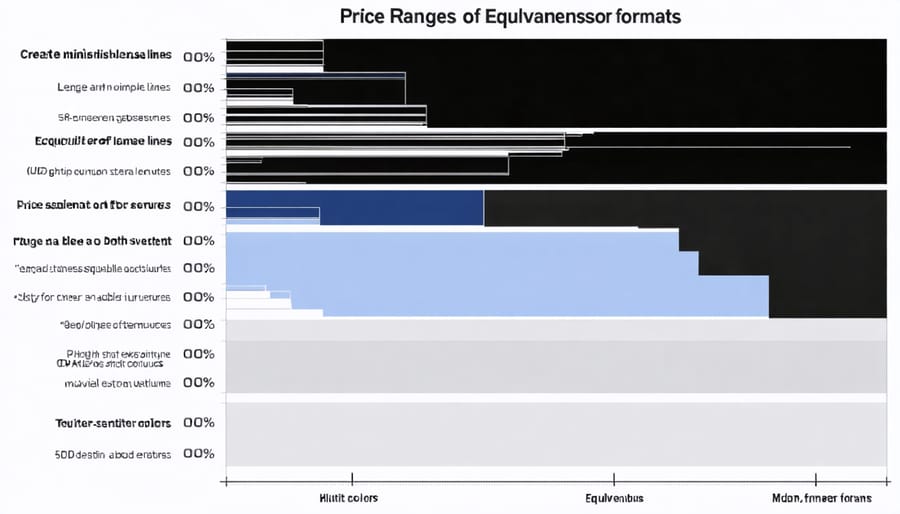
Future-Proofing Your Choice
When investing in a camera system, it’s crucial to consider your long-term photography journey. Full-frame systems typically offer more room for growth, with a wider selection of professional-grade lenses and accessories. This extensive ecosystem means you’re less likely to feel limited as your skills and requirements evolve.
However, 1-inch sensor systems shouldn’t be dismissed as mere stepping stones. Camera manufacturers continue to innovate in this space, developing increasingly sophisticated lenses and features. The compact nature of these systems remains a valuable proposition, especially as computational photography advances.
Consider your five-year photography plan. If you envision yourself deeply exploring specialized genres like wildlife or studio portraiture, a full-frame system might be the better investment. But if you prioritize portability and see yourself as a travel photographer or street shooter, a 1-inch sensor system could serve you well for years to come.
Factor in the financial aspect too. Full-frame gear typically holds its value better, but it also requires a bigger initial investment. 1-inch sensor systems often offer better value for money and can be upgraded within their ecosystem at a lower cost.
Remember that technology evolves rapidly. Today’s 1-inch sensors deliver image quality that rivals yesterday’s full-frame cameras, and this trend of improvement shows no signs of slowing down.
Choosing between a 1-inch sensor and full-frame camera ultimately depends on your specific photography needs, shooting style, and budget. While full-frame sensors offer superior low-light performance, greater dynamic range, and that coveted shallow depth of field, 1-inch sensors have come a long way in recent years, offering an excellent balance of image quality and portability.
For professional photographers specializing in landscape, portrait, or wedding photography, the investment in a full-frame system remains worthwhile. The superior image quality and creative flexibility justify the higher cost and larger size. However, enthusiast photographers, travel photographers, or those prioritizing portability might find a 1-inch sensor camera more practical and cost-effective.
If budget isn’t a constraint and image quality is paramount, full-frame is the clear choice. But if you’re looking for a capable everyday camera that won’t break the bank or weigh you down, modern 1-inch sensor cameras offer remarkable value. For a deeper understanding of how different sensor sizes affect your photography, check out our comprehensive sensor comparison guide.
Remember, great photos come from the photographer, not just the gear. Choose the system that aligns with your shooting style, budget, and creative vision, and you’ll be well-equipped to capture stunning images regardless of sensor size.
